I have IR sensor which have TRS connector and I can record my remotes signals into audio. Now I want to control my computer with TV remote, but I don't have any clue how to compare audio input with pre-recorded audio. But after I realized that these audio waves contains only some kind data (binary) I can turn these into binary or hex, so it is much easier to compare.
Waves look just like this:

And this:

These are records of "OK" button, sometimes there are some impulses on right channel too and I don't know why, it seems like connections in sensor are damaged maybe. Ok thats not matter, anyway
I need help with python program which read these impulses and turn these into binary, in realtime from audio input(mic). I know it's sounds like "Do it for me, while I enjoy my life", but I don't have experiences with sound transforming/reading... I've looking for python examples for recording and reading audio, but unsuccessfully.